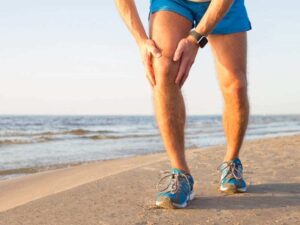 What is the best injection for knee arthritis?
What is the best injection for knee arthritis?
A new study has shown the benefits of combining an injection with physiotherapy for the treatment of knee arthritis. Historically, injections alone have only provided a small level of relief for only a small percentage of patients suffering from knee osteoarthritis.
Common injections include cortisone (steroidal anti-inflammatory), hyaluronic acid (lubricating substance found in cartilage), dextrose (stimulates tissue healing) and stem cells.
The Knee Injection Study
The paper published this year (2023) was titled “Comparative Efficacy of Intra-Articular Injection, Physical Therapy, and Combined Treatments on Pain, Function, and Sarcopenia Indices in Knee Osteoarthritis: A Network Meta-Analysis of Randomized Controlled Trials.”
The paper was a Systematic Review comparing 3 different groups.
1) Physiotherapy only
2) Injection only
3) Injection combined with Physiotherapy
What were the results?
The authors found that for pain reduction, dextrose injection PLUS physiotherapy yielded the best results. For enhancing walking capacity, mesenchymal stem cell injection PLUS physiotherapy was the most effective.
Adding physiotherapy to any injections, yielded better results that the injection alone, so the recommendation is, regardless of what injection you may receive, the results will always be superior if some rehabilitation is undertaken in conjunction with the injection.
Effective physiotherapy treatment of knee osteoarthritis after you have had an injection should be designed to treat your assessable impairments. For example, if you are found to have reduced range of motion of your knee, then some hands on manual therapy may be useful to help restore your the flexiblity of your knee.
More of then not, we find their are weaknesses with strength testing of the quadriceps and hip abductor muscles so these will commonly be strengthened over an 8-12 week period.
With regards to the stem cell injection, Sydney University are currently undertaking a randomised, placebo controlled study at the moment. If you wish to be part of this study, you can read more at https://www.sydney.edu.au/research/volunteer-for-research-study/other/the-sculptor-study.html


